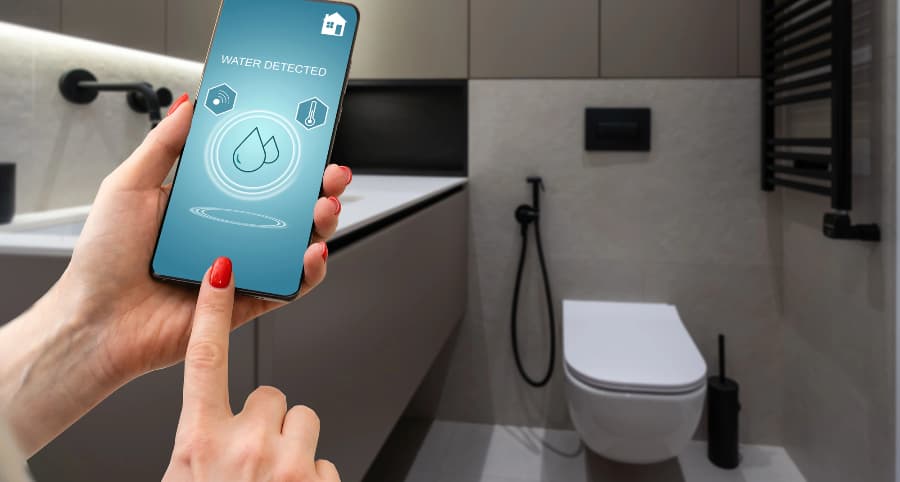How does a water sensor work and why install one with your Tampa smart home?

One minor leak at your property can cause major problems and thousands of dollars worth of damage. You need to protect against this danger; thankfully, there’s a straightforward way to do so. A water sensor is a simple, effective, and budget-friendly solution. See how they work and why you should integrate water sensors into your Tampa smart home.
How water sensors protect Tampa your home
Water penetrates homes in numerous ways, whether from a plumbing problem, weather-related incident, appliance snafu, or simple human error. However it occurs, you need to know immediately, and this is where water sensors come in. But how precisely do they work?
The majority of water sensors are conductive and work with corresponding electrodes. When water enters the area between the electrodes, an electrical circuit is established, triggering your alarm. You’ll also discover capacitive sensors that give off an electrical field. Your alarm activates when water touches the conductive parts of these devices and interrupts the field. Optical sensors using infrared LED light are an additional choice.
Get more from your water sensor
Some advanced water sensors provide even more protection as they have integrated temperature sensors. This is an excellent benefit in preventing frozen pipes. If there’s an extreme drop in temperature, you’ll be notified immediately. Taking steps before pipes burst will shield you from flooding and costly repairs.
Why incorporate water sensors into your Tampa smart home?
When water problems arise, you must be notified at once. You can reach this aim by incorporating water sensors into your smart home. Whether you’re there to hear the alarm or not, you’ll be sent an immediate alert on your smartphone. As an added benefit, your 24-hour monitoring team will be notified. Every moment is critical in a water emergency to control the damage and disruption to your household.
Where should you install water sensors?
Any area susceptible to flooding is a suitable place for water sensors. Install them in these spots:
- Bathrooms: Place near bathtubs or in back of toilets.
- Basements: Water commonly infiltrates lower levels through leaky walls or as a result of heavy rain or broken sump pumps.
- Near water heaters or appliances: Any water-using appliance could leak over time.
- Under sinks: Water sensors are great for identifying plumbing leaks in areas not easy to see.
- Attics: Identify roof leaks early and avert costly repairs.
Install water sensors with your Vivint smart home
Give your residence the robust protection it needs with innovative tools from Vivint. Our water sensors in Tampa link to your Vivint cell phone app to deliver instant updates when your alarm is triggered. You also get incorporated temperature sensors to avert frozen pipes. Discover all the smart home components available in Tampa by reaching out to (813) 590-1845 today.